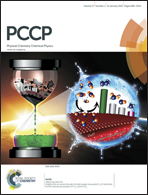Observation of nondispersing classical-like molecular rotation
Abstract
Using the technique of an optical centrifuge, we produce rotational wave packets which evolve in time along either classical-like or non-classical trajectories. After releasing O2 and D2 molecules from the centrifuge, we track their field-free rotation by monitoring the molecular angular distribution with velocity map imaging. Due to the dispersion of the created rotational wave packets in oxygen, we observe a gradual transition between “dumbbell”-shaped and “cross”-shaped distributions, both rotating with a classical rotation frequency. In deuterium, a much narrower rotational wave packet is produced and shown to evolve in a truly classical non-dispersing fashion.


 Please wait while we load your content...
Please wait while we load your content...